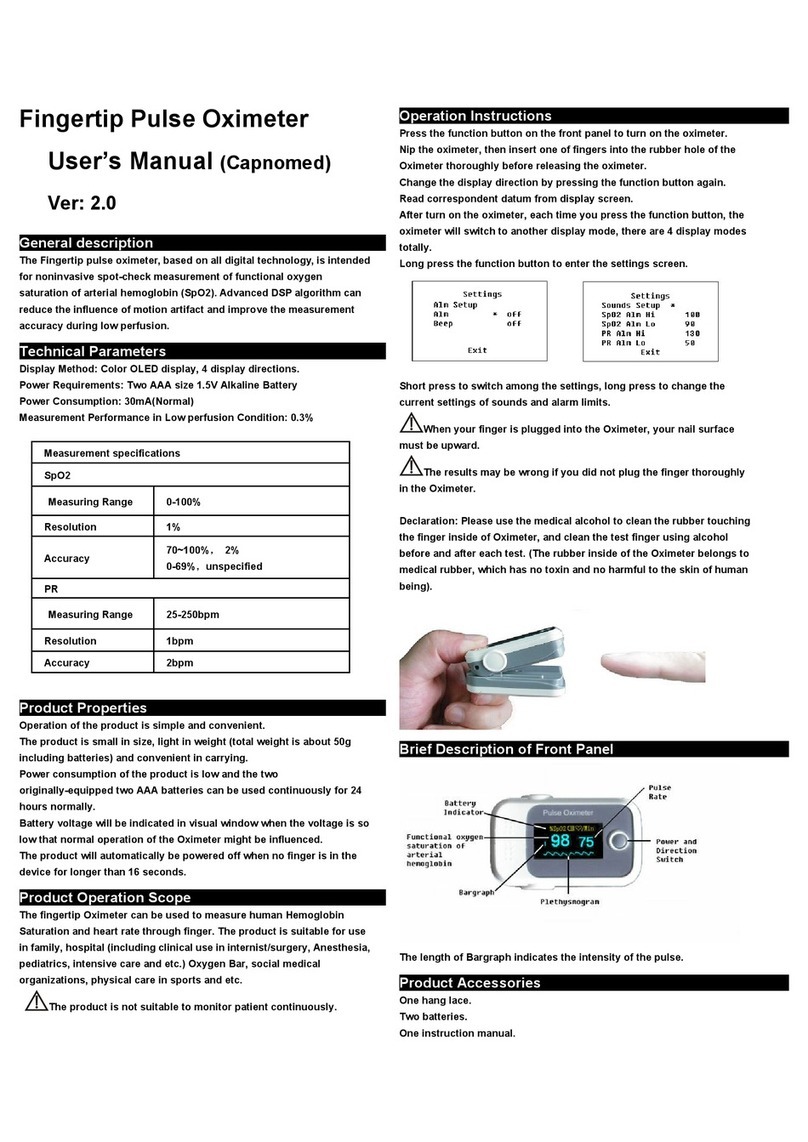
HIMA Plus Handheld Vital Sign Monito User Manual(1.0)
-3-
Contents
1. Product Overview....................................................................................................................................... - 4 -
1.1.Application background.........................................................................................................................- 4 -
1.2.Intended use........................................................................................................................................... - 6 -
1.3.Product structure....................................................................................................................................- 6 -
1.4.Working, transportation and storage conditions............................................................................... - 6 -
1.5.Technical specifications........................................................................................................................ - 6 -
1.6.Product Safety Classification............................................................................................................... - 8 -
1.7.Contraindications................................................................................................................................... - 8 -
2. Precautions, warnings and tips..............................................................................................................- 8 -
2.1. Warning...................................................................................................................................................- 8 -
2.2. Matters needing attention.................................................................................................................. - 11 -
2.3. Icon description................................................................................................................................... - 11 -
3. Appearance of the instrument..............................................................................................................- 12 -
4. Instructions for use................................................................................................................................. - 13 -
4.1. Unpacking............................................................................................................................................ - 13 -
4.2. Install SpO2 Probe and EtCO2 Module.......................................................................................... - 13 -
4.3. Factors affecting performance..........................................................................................................- 15 -
4.4. Boot....................................................................................................................................................... - 16 -
4.5. Monitoring process............................................................................................................................. - 16 -
4.6. Shutdown............................................................................................................................................. - 17 -
5. Settings........................................................................................................................................................- 17 -
5.1. Volume setting.....................................................................................................................................- 18 -
5.2. Alarm settings......................................................................................................................................- 19 -
5.2.1 Physiological alarm.......................................................................................................................... - 19 -
5.3. Time setting......................................................................................................................................... - 21 -
5.4. Record settings................................................................................................................................... - 21 -
5.5. System Settings.................................................................................................................................. - 22 -
5.6. File System.......................................................................................................................................... - 23 -
6. Maintenance and maintenance of the instrument.............................................................................. - 24 -
6.1. Troubleshooting.................................................................................................................................. - 24 -
6.2. Battery use and maintenance...........................................................................................................- 26 -
6.3. Instrument cleaning............................................................................................................................ - 26 -
6.4. Waste treatment..................................................................................................................................- 27 -
6.5. Packing list...........................................................................................................................................- 27 -
7. Alarm and indication................................................................................................................................... - 28 -
7.1. Alarm signal......................................................................................................................................... - 28 -
7.2. Default alarm settings........................................................................................................................ - 28 -
7.3. Mute...................................................................................................................................................... - 29 -
7.4. Battery indicator.................................................................................................................................. - 29 -
7.5. Alarm threshold setting...................................................................................................................... - 29 -
7.6. Sound characteristics.........................................................................................................................- 30 -
7.7. Alarm function verification................................................................................................................. - 30 -
8. EMC statement..............................................................................................................................................- 30 -
8.1.Description............................................................................................................................................ - 31 -
8.2.precautions in use................................................................................................................................- 31 -
8.3. precautions regarding........................................................................................................................ - 31 -
9. quality promise.............................................................................................................................................- 34 -




























